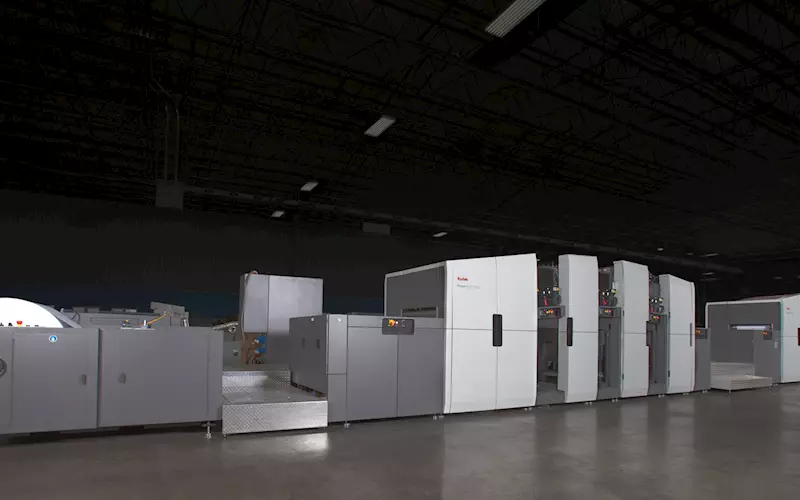Kodak shake things up in inkjet production with new Prosper 6000 series
Kodak has announced the launch of its next generation Kodak Prosper 6000 series presses, which it claims incorporates new innovations in transport, drying, and writing systems, combined with advanced press management technology. The latest offering has effectively become the fastest production inkjet press in the market.
13 Jun 2014 | By PrintWeek India
The Prosper 6000 series presses supports paper width from 8-inch to 25.5-inch and has an optional inline auto splicer, which according to Kodak reduces downtime. While the presses can print at speed of up to 1,000 feet, or 300 meters, per minute on matted and uncoated papers with a duty cycle of 90mn A4 top quality pages per month, an enhanced drying capability allows heavy-weight glossy and silk stock to be printed on the Prosper 6000C Press at 650 feet, or 200 meters, per minute.
The previous Prosper line before this, including its colour and Prosper 1000 monochrome presses, have an estimated production of more than 40-billion pages to date. In India, Repro India with its Prosper 1000 is reported to be printing 50mn A4 sheets per month and is looking to ramp it up.
Ramani Viswanathan, vice president for sales, digital printing solutions, commercial imaging at Kodak India, said, “The Kodak Prosper 6000 Presses are a completely new product offering in the digital printing domain; one that delivers high levels of reliability, print speed and application flexibility.”
The Prosper 6000 series comes in two base models, the 6000C is aimed at commercial print with high ink coverage, while the 6000P is aimed to target the publishing applications like books, newspaper and data-driven print applications such as direct mail and transaction, that uses light weight papers and low coverage of ink. The new individual colour towers, similar to web offset press, have been developed for easy transition from offset to inkjet for its customers.
“The driving technology enables capabilities to exceed industry performance benchmarks, and bringing our customers the flexibility to react to the demands of dynamic and challenging print environments," said Viswanathan.












 See All
See All